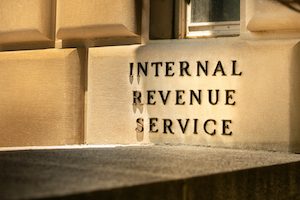 The IRS has issued a reminder to retirement plan participants and IRA owners that most retirees must take their required minimum distributions (RMDs) by Dec. 31, 2021. It issued the reminder on Dec. 8.
The IRS has issued a reminder to retirement plan participants and IRA owners that most retirees must take their required minimum distributions (RMDs) by Dec. 31, 2021. It issued the reminder on Dec. 8.
RMD Basics
RMDs generally are minimum amounts that retirement plan account owners must withdraw annually starting with the year they reach a set age or, if later, the year they retire. The RMD is based on the taxpayer’s life expectancy and their account balance. If an RMD is not withdrawn from an account by the time that it must, penalties may be imposed.
An IRA trustee, or plan administrator, must report the amount of the RMD to the IRA owner. An IRA owner, or trustee, must calculate the RMD separately for each IRA owned. However, they can choose to withdraw the total amount from one or more of the IRAs. In contrast, RMDs required from workplace retirement plans must be taken separately from each plan. Not taking a required distribution, or not withdrawing enough, could mean a 50% excise tax on the amount not distributed.
Often, a trustee will use Form 5498, IRA Contribution Information, to report the RMD to the recipient. For most taxpayers, life expectancy used to calculate the RMD is based on Uniform Lifetime Table III in Publication 590-B, Distributions from IRAs. Individuals can use online worksheets on IRS.gov to figure the RMD.
Recent Changes
Under the SECURE Act, the age by which a retirement plan account owner must take an RMD is 72. However, if the retirement plan account is an IRA or the account owner is a 5% owner of the business sponsoring the retirement plan, the RMDs must begin once the account holder is age 72, even if that individual is still working.
Under the CARES Act, individuals who reached age 70½ in 2019 (whose 70th birthday was June 30, 2019 or earlier) did not have to take an RMD for 2020. An IRA owner or beneficiary who received an RMD in 2020 had the option of returning it to their account or other qualified plan to avoid paying taxes on that distribution. A 2020 RMD that qualified as a coronavirus-related distribution may be repaid over a 3-year period or have the taxes due on the distribution spread over three years. A 2020 withdrawal from an inherited IRA could not be repaid to the inherited IRA but may be spread over three years for income inclusion.
Under the CARES Act, individuals who reached age 70½ in 2019 did not have to take an RMD for 2020, but must take one by Dec. 31, 2021. The first RMD for individuals who reach 72 in 2021 (and whose 70th birthday was July 1, 2019 or later) is due by April 1, 2022.
To Whom the RMD Rules Apply
The required distribution rules apply to:
- owners of traditional IRAs
- owners of traditional Simplified Employee Pension (SEP) IRAs
- owners of Savings Incentive Match Plans for Employees (SIMPLE) IRAs
- participants in 401(k), Roth 401(k), 403(b) and 457(b) plans
Roth IRAs do not require distributions while the original owner is alive.
IRS Online Tools and Publications
The IRS provides further information through the following:
- FAQs regarding Required Minimum Distributions
- Individual Retirement Arrangements (IRAs)
- Coronavirus Relief for Retirement Plans and IRAs
- Log in to post comments
